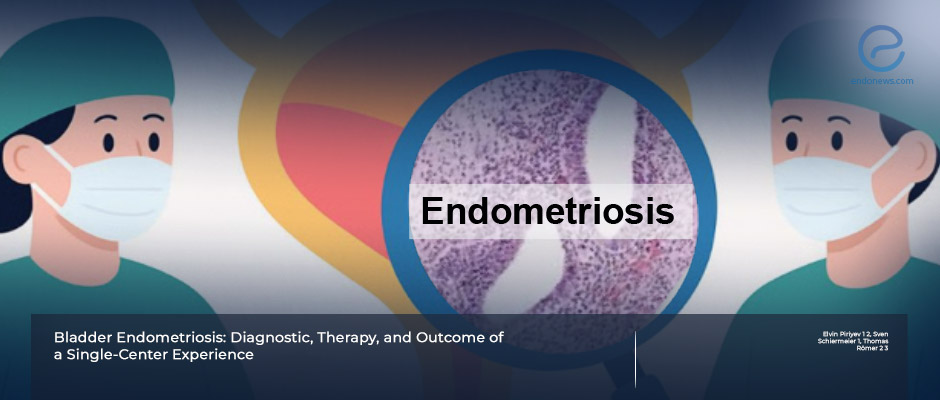Symptom Improvement After Laparoscopic Treatment of Bladder Endometriosis
May 1, 2025
Bladder endometriosis has favorable outcome by multidisciplinary approach
Key Points
Highlights:
- Endometriosis can involve distant sites such as the urinary tract, with the bladder being the most commonly affected organ.
- Bladder endometriosis specifically involves infiltration of the detrusor muscle, with or without mucosal involvement, extending beyond superficial peritoneal disease or the uterovesical fold.
Importance:
- The prevalence of urinary tract endometriosis among patients with endometriosis ranges widely from 0.3% to 12%, with the bladder representing the most frequent site of involvement.
What's done here:
- This single-center retrospective study from the Academic Hospital Weyertal, a Level III Endometriosis Center of Excellence, presents outcomes of the diagnosis and surgical management of bladder endometriosis.
Main key feature:
- In the surgical management of bladder endometriosis, the authors advocate for interdisciplinary collaboration between gynecologists and urologists, particularly when ureteroneocystostomy is required or when the location of an endometriotic lesion presents technical challenges.
Strengths of this study:
- The study analyzed a large cohort of 11,714 laparoscopically treated endometriosis patients, all with histopathological confirmation of disease.
- The patient cohort included all phenotypes of endometriosis (peritoneal, deep infiltrating, and ovarian), enhancing the generalizability of the findings.
Lay Summary
Dr.Piriyev and associates from the Academic Hospital Weyertal, a Level III Endometriosis Center of Excellence in Germany, recently shared their experience with bladder endometriosis in the journal Diagnostics.
Endometriosis, a disease affecting millions of women worldwide, can also involve distant organs such as the urinary system. Urinary tract involvement is reported in 0.3% to 12% of women with endometriosis and in up to 53% of those with deep infiltrating disease. Among urinary tract sites, the bladder is the most frequently affected, accounting for up to 80% of cases, followed by the ureters (9–23%).
In this single-center retrospective study, 42 cases of bladder endometriosis were identified among 11,714 laparoscopic endometriosis surgeries, representing a prevalence of 0.35%.
Of these patients, 37 underwent laparoscopic partial bladder resection. Histopathological examination confirmed endometriotic lesions ranging in size from 1 to 4.5 centimeters.
The findings suggest that partial bladder resection or shaving techniques are effective treatment options with minimal complications when performed by experienced laparoscopic surgeons.
The authors emphasize that the management of bladder endometriosis often requires an interdisciplinary approach, involving urologists particularly when ureteroneocystostomy is needed or when lesions are located in technically challenging areas.
Research Source: https://pubmed.ncbi.nlm.nih.gov/40002617
endometriosis bladder laparoscopy multidisciplinary

